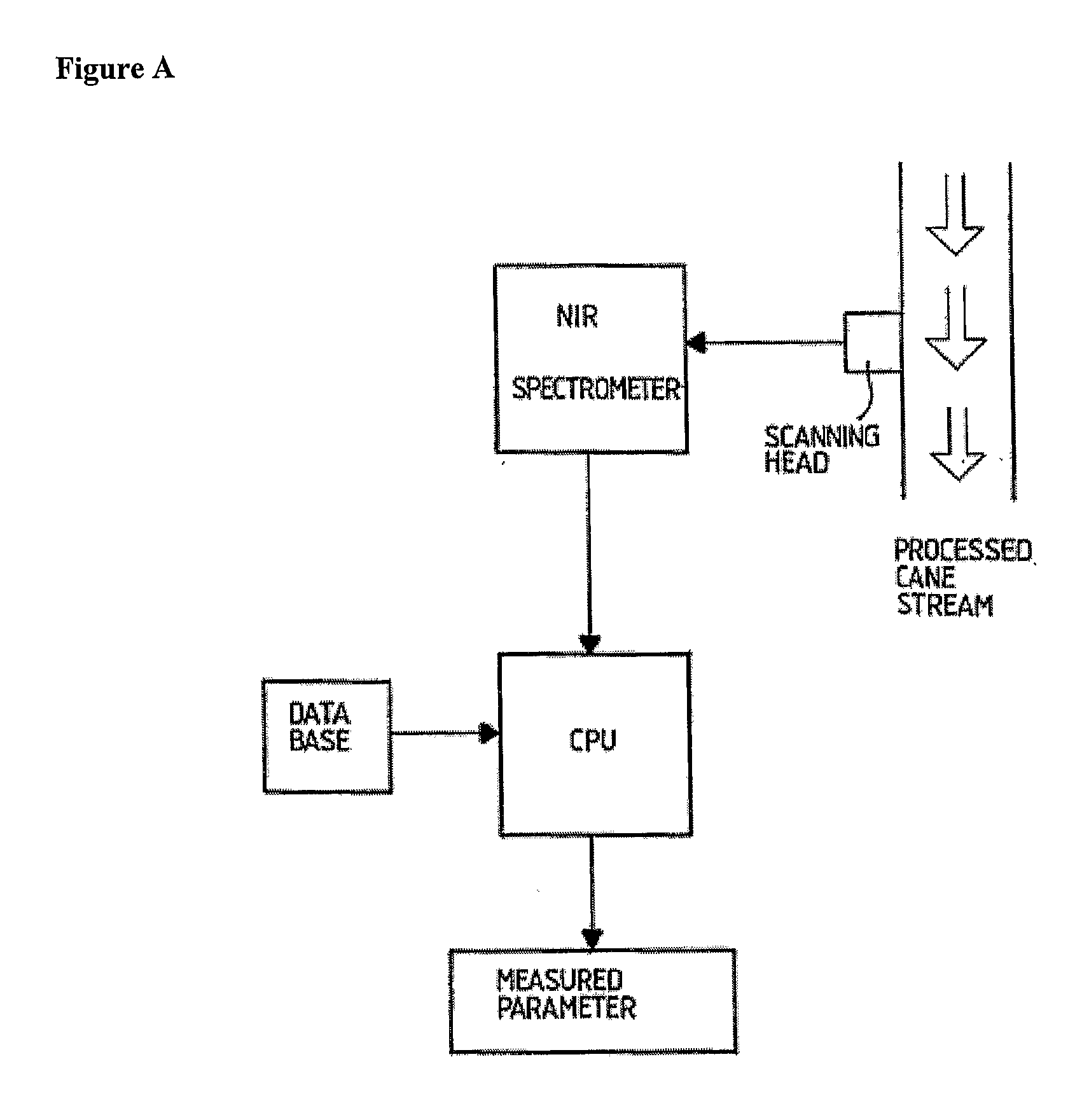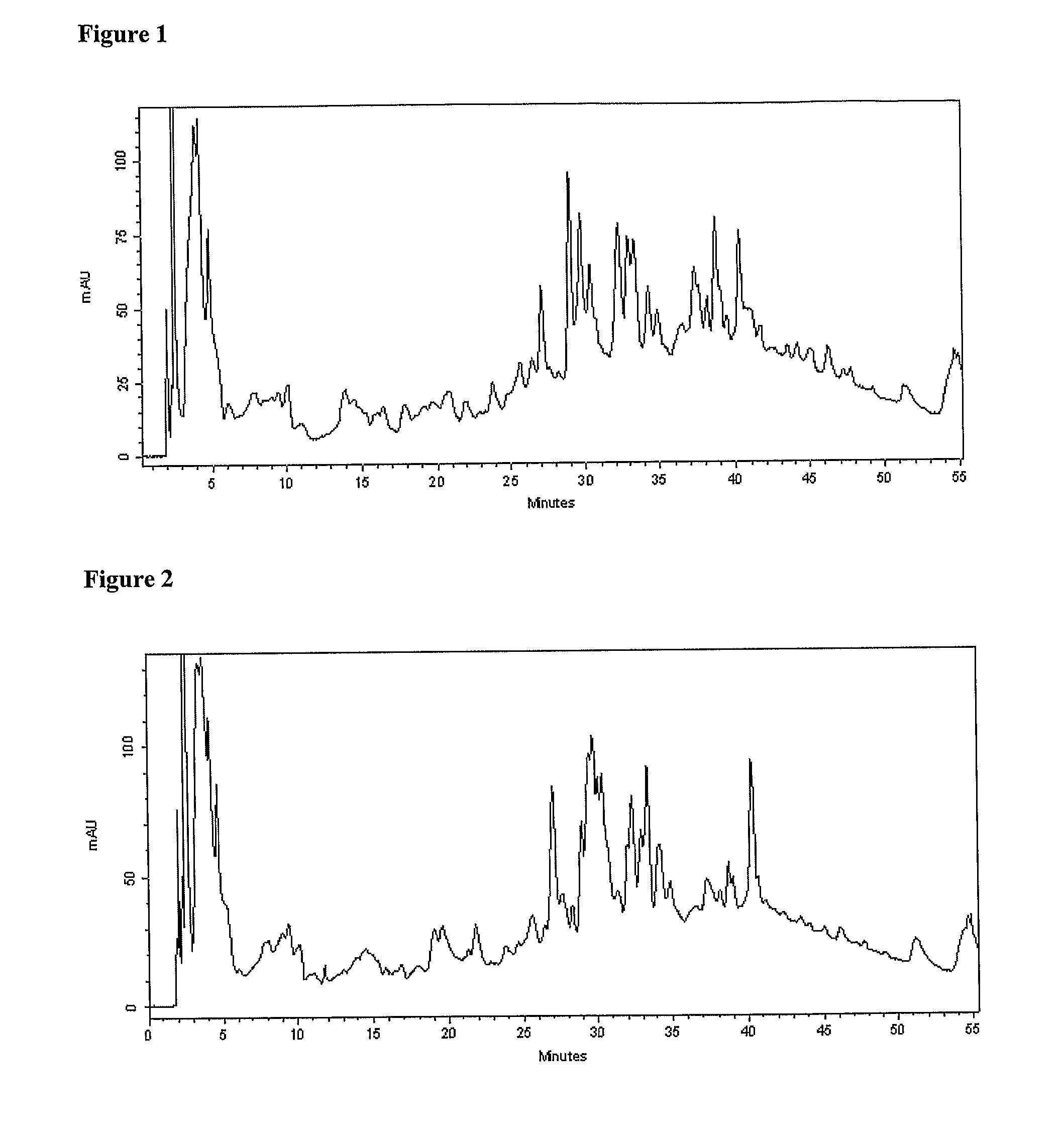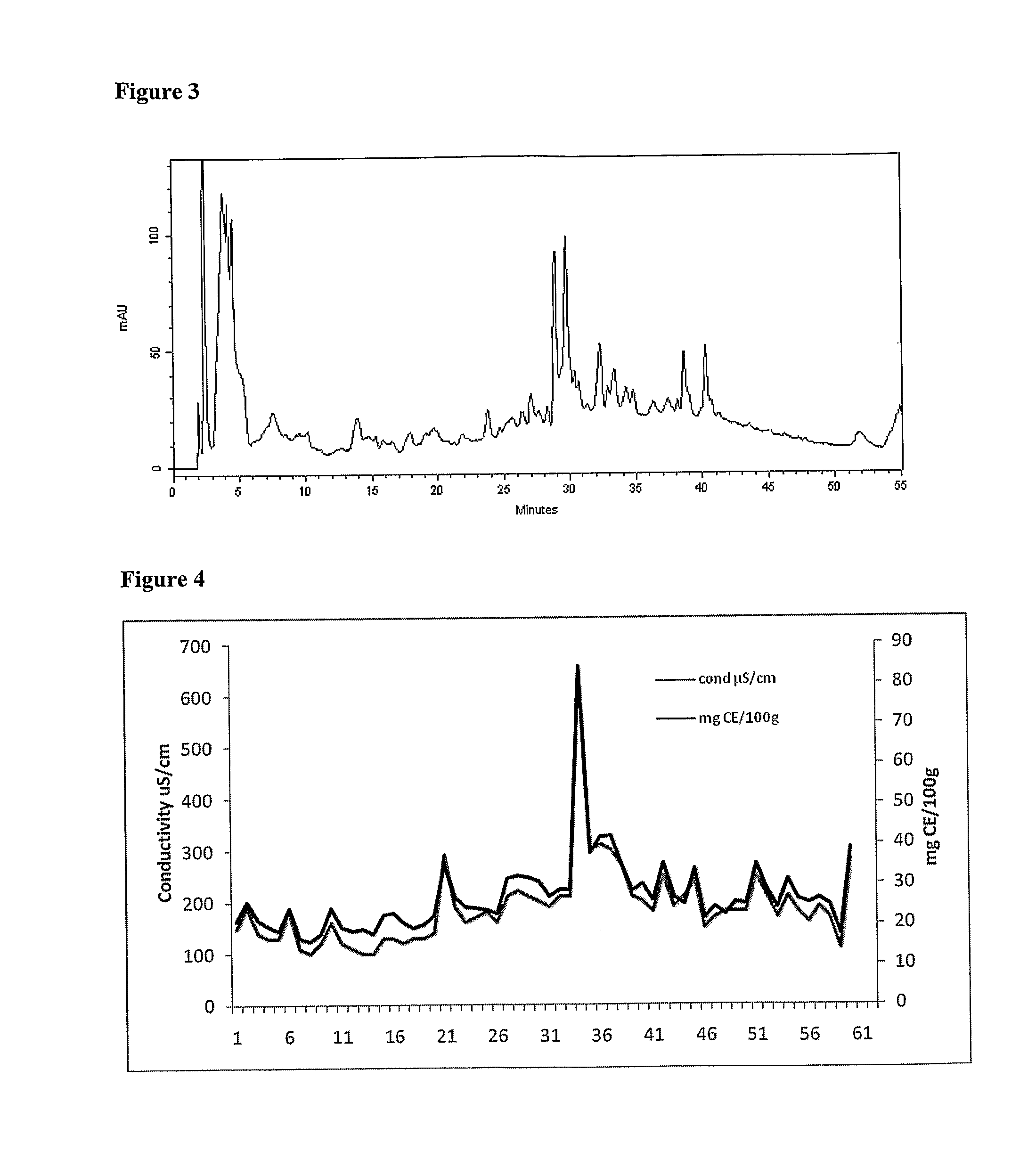Process for the Manufacture of Sugar and Other Food Products
- Summary
- Abstract
- Description
- Claims
- Application Information
AI Technical Summary
Benefits of technology
Problems solved by technology
Method used
Image
Examples
example 1
[0130]Low GI sugar (GI between 50 and 54) was prepared in a primary sugar mill which had been converted to food grade status with an approved and audited food safety system.
[0131]The preparation comprised the following steps:[0132]1. Sugar massecuite was washed in the fugals to a composition below the final desired range being targeted i.e. low color and low polyphenol levels. This was achieved by adjusting the amount of water used, the time and G force of the fugal. Allowance was made from time to time for compositional variations in incoming cane varieties, the day to day variations in the overall extraction, clarification and crystallization process.[0133]2. In a new and separate food grade facility, molasses was extracted and purified to produce a concentrated and standardized (mg polyphenol / L) polyphenol syrup. This syrup (a dark t yellow colored liquor of between 60-70 Brix) was metered into the washed base sugar in the fugal using a spraying system.[0134]3. The syrup treated ...
example 2
[0139]This example investigates whether there is any correlation between electrical conductivity (EC) and polyphenol levels in sugar. If confirmed then this could be used as a colorimetric method for online and offline polyphenol assessment.
[0140]Chemicals: Folin-Ciocalteu reagent and (+)-catechin standard were purchased from Sigma-Aldrich (St Louis, Mo.). Sodium carbonate was obtained from Labsery (Melbourne, Australia) and 3-(N-morpholino)-propanesulphonic acid (MOPS) was from BDH Laboratory Supplies (Dorset, UK). All chemicals used were analytical grade.
[0141]Sample Collection: Raw sugar samples were obtained from Mossman Central Mill (MCM) during standard sugar production. At regular intervals over a two day period approximately 100 g of raw sugar was sampled from the finished product conveyor using screw capped plastic bottles.
[0142]Polyphenol Analysis: 40 g of raw sugar sample was accurately weighed into a 100 ml volumetric flask. Approximately 40 ml of distilled water was add...
example 3
[0152]This example investigates the use of near infrared (NIR) spectroscopic methods to predict the quantities of polyphenolics, organic acids and minerals in sugar. This information can then be used to develop a suitable NIR method for online and offline polyphenol assessment for manufactured low GI sugars and polyphenol extracts.
[0153]Constituent equations developed in this example include:[0154]Polyphenols (eg feulic acid)[0155]Minerals[0156]Organic acids (eg aconitic acid)[0157]Antioxidants[0158]Glucose[0159]Fructose
[0160]The equations are purpose developed for the BSES system but with alteration, may be used in other NIR systems including for example, laboratory instruments which could be used in an offline situation.
Results:
[0161]The results are illustrated in FIGS. 8 to 33. It is clear from the figures that the sample points are all close to the linear plot.
Conclusion:
[0162]As the sample points reach linearity, the r2 value moves closer to 1. FIGS. 8 to 34 in this example con...
PUM
 Login to View More
Login to View More Abstract
Description
Claims
Application Information
 Login to View More
Login to View More - R&D
- Intellectual Property
- Life Sciences
- Materials
- Tech Scout
- Unparalleled Data Quality
- Higher Quality Content
- 60% Fewer Hallucinations
Browse by: Latest US Patents, China's latest patents, Technical Efficacy Thesaurus, Application Domain, Technology Topic, Popular Technical Reports.
© 2025 PatSnap. All rights reserved.Legal|Privacy policy|Modern Slavery Act Transparency Statement|Sitemap|About US| Contact US: help@patsnap.com



